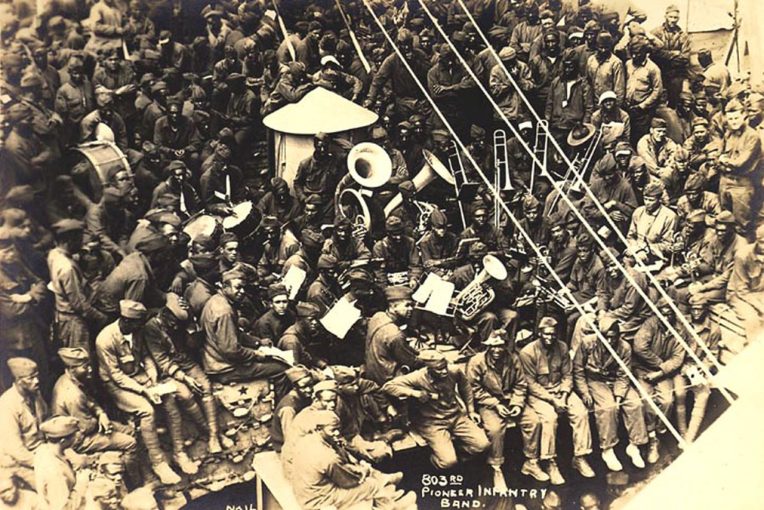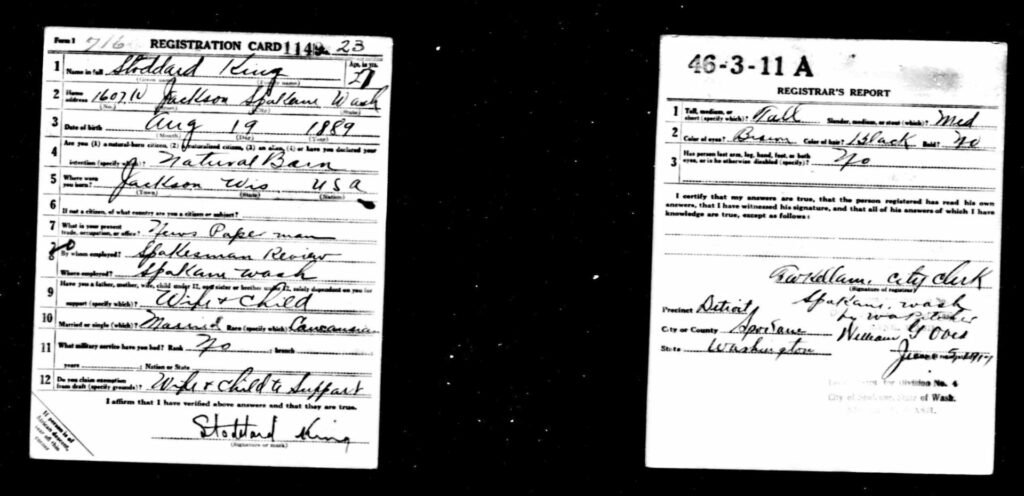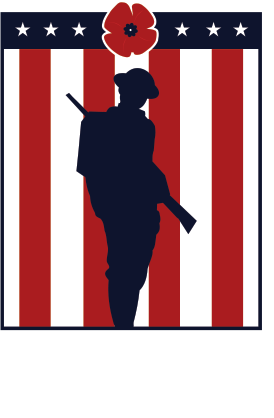The Pioneer Infantry in the Great War
Published: 17 June 2024
By Maddi Loiselle
via the Illinois State University website

The 803rd Pioneer Infantry band
The 803rd Pioneer Infantry band on the U.S.S. Philippines in Brest, France from 1919.
The World War I Illinois State Normal University Service Records collection is filled with stories of heroism from ISNU students and staff, collected by our first librarian, Ange Milner. Milner also collected files from Black students who participated in the war effort in America and in Europe, and who faced the terrors of war while not be treated as equals from their superior officers and other white soldiers. This blog post is a summary of the Pioneer Infantry as told by the Torchbearers of Democracy: African American Soldiers in the World War I Era from Chad L. Williams that can be accessed as an ebook in the library catalog.
The United States entered World War I in April 1917 after Germany failed to follow through on a promise to end submarine warfare in the North Atlantic Ocean and the Mediterranean Sea. The Selective Service Act was approved in May 1917, and two senators from southern states fought the enrollment of Black Americans in fear that participating in the war would embolden them to oppose racial discrimination in the States. During the Civil War just a few decades prior, 187,000 Black men, known as Buffalo Soldiers, fought for the Union, proving that they were “willing to pay the cost [of freedom] with their blood” (Williams, Pg. 5). Congress went ahead with drafting Black Americans, and it is estimated that 2.3 million Black men registered and 370,000 served (Williams, Pg. 6). The southern senators’ fears were founded because it led to “Black people on the everyday level to resist white supremacy, affirm their citizenship, and assert their basic humanity” (Williams, Pg. 4).

Draft card from National Archives and Records Administration on Wikimedia with bottom left corner indicating “If person is of African descent tear off this corner.”
The draft cards differed based on a person’s race. A corner of the draft card was ripped to indicate a Black individual, which excluded them from the Marines, would place them in menial roles in the Navy, or enroll them in certain Army divisions, including the Services of Supply (SOS) units and its subunit, the Pioneer Infantry. The SOS was the support unit for the war effort who brought food, ammunition, and other materials to camps, but the members were not trained for combat (Williams, Pg. 111). One-third of the entire SOS units were Black soldiers, and the “disproportionate representation of African Americans reflected how the Army attempted to link Black military service exclusively with labor, as opposed to combat” (Williams, Pg. 111). If they were sent overseas, they would have as little as a month of training. Williams provides a list of common duties for these soldiers: “constructing base facilities, delivering mail, building roads, feeding horses and mules, cleaning latrines, salvaging battlefields, and burying the dead,” and the labor division contributed to the continued racial hostility (Pg. 111). Williams also quoted an SOS individual stuck at a camp: “I don’t want to stagger under heavy boxes… I want a gun on my shoulder and an opportunity to go to the front” (Pg. 112).
Read the entire article on the Illinois State University website here:
External Web Site Notice: This page contains information directly presented from an external source. The terms and conditions of this page may not be the same as those of this website. Click here to read the full disclaimer notice for external web sites. Thank you.



